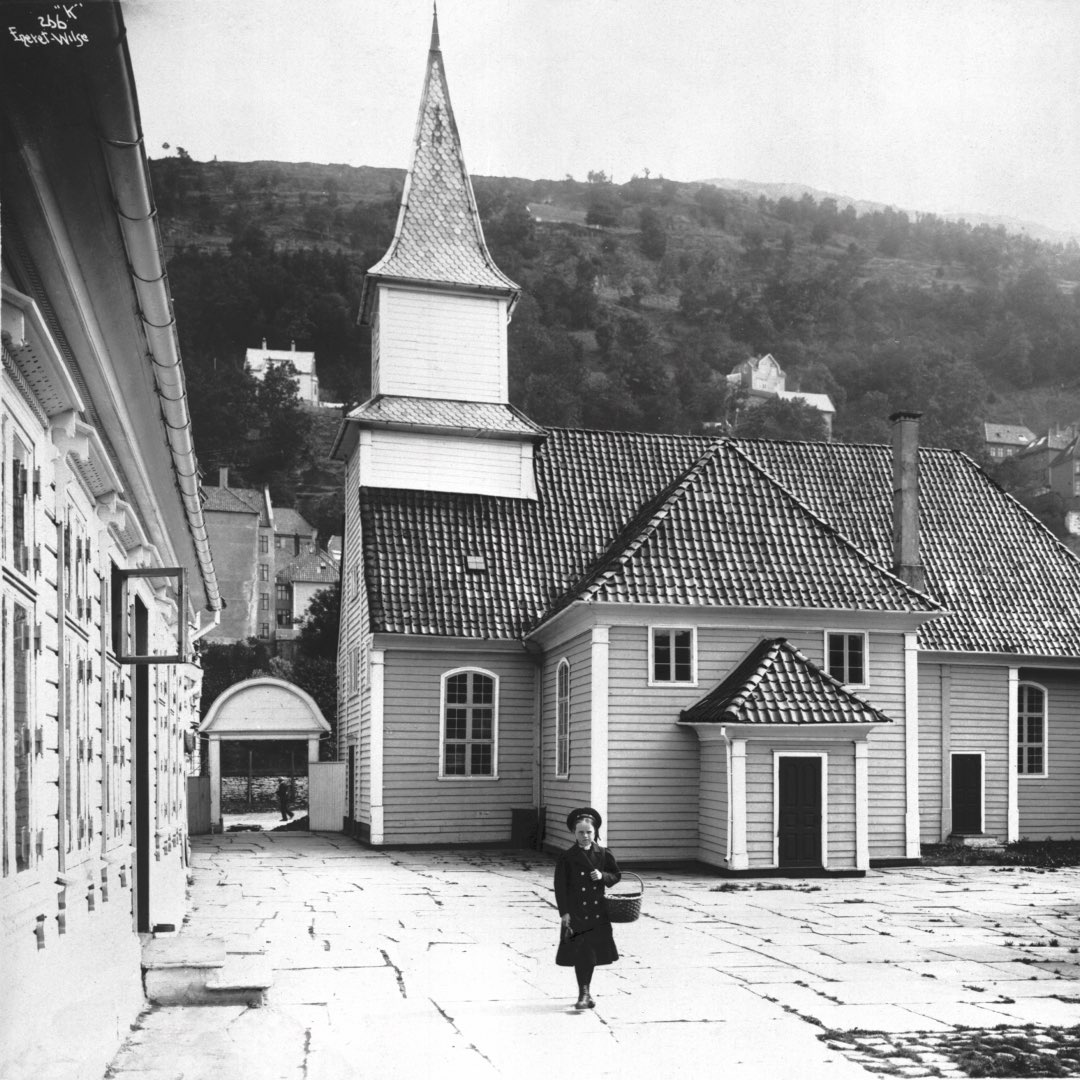Bergen has had three leprosy hospitals since the Middle Ages. St. Jørgen’s Hospital in Marken is the oldest. It was established in the early 15th century, but all the current buildings date from after the city fire of 1702. In the mid-19th century, two state hospitals were established at Kalfaret, just outside the city gate. Lungegård Hospital opened in 1849 to serve as a research and treatment institution. Pleiestiftelsen Hospital for Leprosy No. 1, was built close by and received its first patients in 1857.
St. Jørgen’s Hospital
The district of Marken is home to Bergen’s oldest leprosy hospital. St. Jørgen’s Hospital was founded in the early 15th century, but the ten different sized buildings on the site today were built after the city fire of 1702. The hospital primarily became a home for people with leprosy, although for a long time, other people who were sick or in need of care could apply for a place there. The last residents passed away in 1946, having lived here for over 50 years. The old hospital now houses the Leprosy Museum.
Pleiestiftelsen Hospital
Pleiestiftelsen Hospital was completed and received its first patients in 1857. The large wooden building could accommodate 280 patients and was located close to Lungegård Hospital, which had been erected a few years earlier. Initially, Pleiestiftelsen was primarily a care institution but also went on to conduct treatment trials. In 1895, the laboratory was moved from Lungegård Hospital to Pleiestiftelsen. The institution more or less closed down in 1957, but a few residents remained there until 1973.
Lungegård Hospital
Lungegård Hospital is perhaps the least known of Bergen’s three leprosy hospitals. The hospital opened in October 1849 but had to be rebuilt after a fire in 1853. Most of its patients had leprosy, but the hospital also admitted patients with syphilis and various skin diseases. Lungegård Hospital was a research hospital for leprosy until 1895. It was probably in this hospital’s laboratory that Gerhard Armauer Hansen identified the leprosy bacterium on a February evening in 1873.






